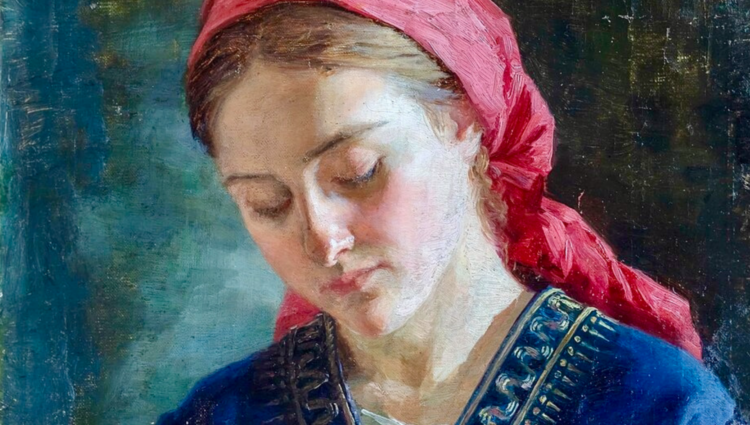Vocal prayer can become the very foundation of all prayer, in which we can always find solace and support when the contemplative way seems to lead nowhere but into dark nights, when the well runs dry.
 If we are beginning a journey upon which our whole future depends, it is of paramount importance to understand exactly where we are going. When we begin to pray seriously, St Teresa of Ávila makes it clear that our destination is what she called the Mystical or Spiritual Marriage. The Greek Fathers called this same destination divinization or theosis.
If we are beginning a journey upon which our whole future depends, it is of paramount importance to understand exactly where we are going. When we begin to pray seriously, St Teresa of Ávila makes it clear that our destination is what she called the Mystical or Spiritual Marriage. The Greek Fathers called this same destination divinization or theosis.
In order to understand the way ahead, imagine a great classical archway that rises on two sides and meets at the centre keystone at the apex of the arch. The left side represents vocal prayer, the right side contemplative prayer that begins with meditation. In a balanced spiritual life, both grow and rise to perfection simultaneously meeting in the keystone which is Christ. Both are essential in an authentic life of prayer, as can be seen in the life of Christ.
We know for a fact that Christ used vocal prayers from his earliest years and continued to use vocal prayer to the end of his life, whilst at the same time being totally engaged in mystical contemplation. We know that he prayed using vocal prayer at least five times a day if not more, with his disciples, at home, at mealtimes, whilst travelling, as well as in the Synagogue and the Temple. However, from the moment he was born into this world, he was in his divine nature totally engaged in contemplating the infinite loving Father who sent him and to whom he would return with as many as would follow him. At times he would have to retreat to lonely places totally alone on the mountain side, into the inner room, into the garden “where it was his custom to pray”. Here he would have longer periods of time to relish what he was receiving from his loving Father and to allow the love that he was receiving in his divine nature to percolate through ever more fully into his human nature. In this way he was enabling the two forms of prayer to become one, in what came to be called the “prayer without ceasing” which reaches its consummation in the mystical marriage.
We do not have a divine life like Jesus, but we do have an inner life that can develop into a contemplative life. This contemplative life takes us up and into Christ’s own contemplation of his Father that began on earth, and which continues now in heaven. Here, our contemplation is fitted into his contemplation where his ecstatic joy becomes our ecstatic joy too. But let us begin at the beginning with the left-hand side of the archway in my analogy. Then I will return to the right-hand side, showing how meditation comes to its summit in what some have called Acquired Contemplation, or the Prayer of Simple Regard. This develops into the God-given contemplation that rises through purification under the guidance of the Holy Spirit into the Mystical or Spiritual Marriage that St Teresa of Ávila describes in her masterwork The Interior Castle.
Most of us, like Jesus, are taught set prayers by our mothers that we use for the rest of our lives. We add to them and are taught further prayers and devotions like the Rosary, the Stations of the Cross and innumerable other pious practices. Then, as we progress in the spiritual life, what were at first set prayers that we used to recite, are put into our own words as our intimacy with Christ deepens. Jesus made it clear that he wants us to become his brothers and sisters. He even went further when he said at the Last Supper that he wants us to become his friends. As this realization begins to register, vocal prayer understandably becomes correspondingly deeper and deeper and more and more intimate. Then finally the most profound realization of all begins to dawn. Christ wants this friendship to be as close as that of married couples, only even more penetrating, because as Jesus said at the Last Supper, “If anyone loves me he will keep my word, and my Father will love him, and we shall come to him and make our home with him” (John 14:23). This profound realization leads to deeply personal encounters with Christ in the language of love.
In the early Church it would take two years of preparation before a person was initiated into the Christian community. During this time, they were taught predominantly vocal prayers that were said at least five times a day. These prayers were derived from the Jewish prayers that Jesus was taught and which he used when he prayed with his disciples. Later, the disciples would teach the first Christians to use them too. However, after the sending of the Holy Spirit these prayers were said in a new context as the Holy Spirit drew all who were open to receive him into the mystical body of Christ. That is why these traditional prayers and new ones that were added were all prayed, in him, with him, and through him to the Father. It is these prayers that would be used daily by the first Christians for two years before they were baptised on Easter night and taken up into the Mystery of Christ with others who had undergone the same training in practical daily prayer.
The more you become acquainted with the lives of the saints the more you will become aware of the mystical dialogues that took place between them and their “Tremendous Lover”. Some of these, like the dialogues of St Catherine of Siena were written down. Sometimes Christ would appear to them in person with revelations that were not just for them personally, but for the rest of us, like the revelation to St Francis of Assisi about the primacy of love, and the revelation to St Margaret Mary about that same primacy of love, as embodied in the Sacred Heart. The point I want to make is that when vocal prayer is taken seriously and deepens daily, it becomes what the Divine Office is meant to be for priests and religious.
It is of paramount importance to be taught and to practise the daily prayer and the prayers that should underpin every authentic Christian’s spiritual life, as practised by Jesus and his disciples before the Resurrection and by all his devoted followers after the Resurrection down to the present day. They are vital, as I tried to show with the analogy of the Archway. I want to stress this point to encourage readers to put into practice more formal prayers, so that when the time comes for purification in the dark night you will have in place a regular and practised pattern of daily prayer. It is this daily prayer that will sustain you when mystical prayer seems to have plunged you into darkness from which there seems to be no escape.
If our daily vocal prayers are genuinely inspired by the Holy Spirit, they will automatically mirror characteristic themes such as sorrow for sin, expressions of faith, sacrifice, offerings, acts of praise, thanksgiving and adoration that are the very essence of the Mass. Just as the act of worship opens the community to receive the fullness of God’s love in the Mass, so it also opens everyone to that same love in the daily personal prayers that enable our whole lives to become the Mass. In other words, the place where we offer minute by minute, hour by hour, day by day all we say and do, all our successes our failures, all our joys and all our sorrows and sufferings to God through Jesus. Therefore, for the man or woman of faith, every moment is the moment when we both offer our selfless loving to God to receive his loving in return, in, with and through Christ in whom we live and move and have our very being. This is how every moment becomes a sacrament, the “sacrament of the present moment” where time reaches out through love to touch eternity.
Vocal prayer can become the very foundation of all prayer in which we can always find solace and support when the contemplative way seems to lead nowhere but into dark nights when the well runs dry. But I will return to this later.
This essay is chapter three of The Primacy of Loving and is published here by gracious permission of the author.
The Imaginative Conservative applies the principle of appreciation to the discussion of culture and politics—we approach dialogue with magnanimity rather than with mere civility. Will you help us remain a refreshing oasis in the increasingly contentious arena of modern discourse? Please consider donating now.
The featured image is “Modlitwa” [“Prayer”] (before 1898), by Maria Klass-Kazanowska and is in the public domain, courtesy of Wikimedia Commons.











